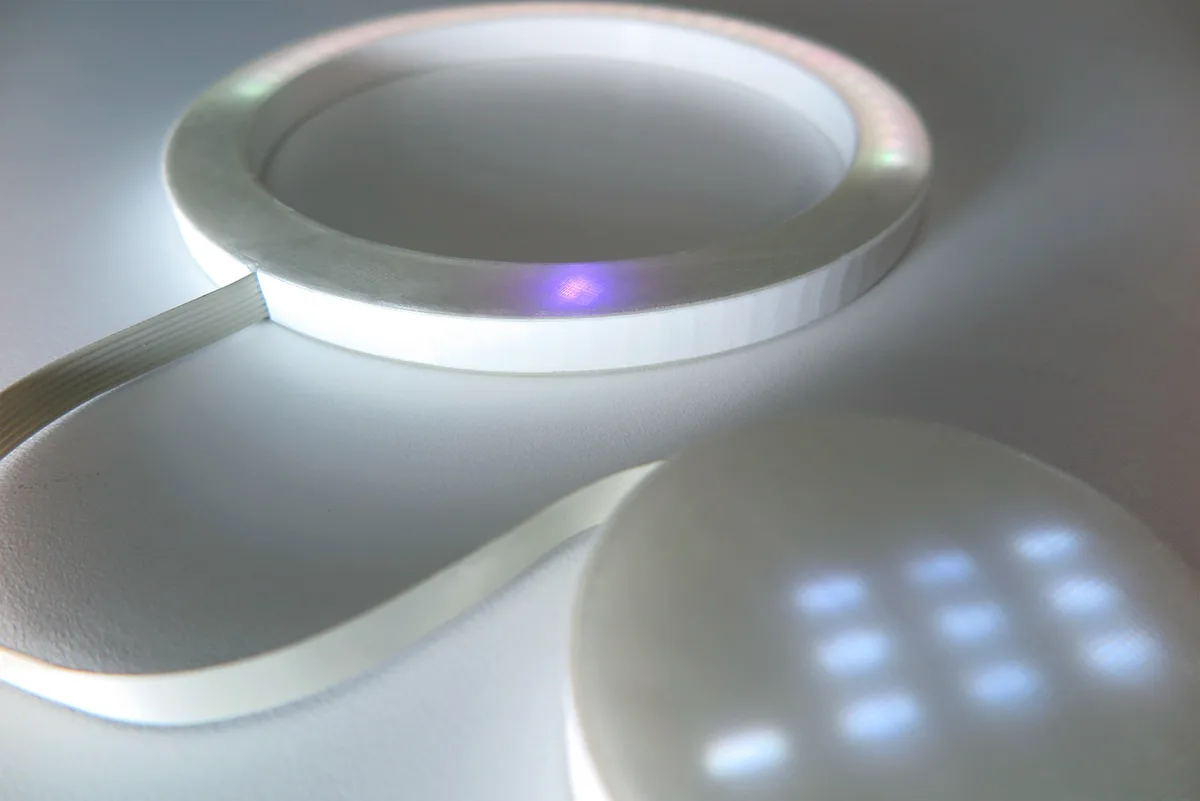
THE FUTURE OF ADVERTISING AGENCIES
October 1, 2020
A SPARK
October 8, 2020Remember Google Glass? Well I was one of those initial Glass Explorers aka “Glassholes” who put these things on when they were launched in 2013. The product was discontinued in 2015 after they failed to gain traction at a $1,500 price tag and because their clunky design and privacy concerns just turned people off.
A second Google Glass for business was released in 2019 as was the more expensive Microsoft HoloLens 2 which goes for $3,500. These products were designed to be used in various industrial and medical settings.
With the failed launch of the Magic Leap 1 AR headset some may wonder if an attempted entry into the arena of Augmented Reality or AR glasses is a wise move; perhaps the tech isn’t quite there yet for it to function in a way and at a price that is appealing to consumers. But the allure of grabbing a large share of this looming platform marketplace might be too tempting. Afterall Apple is rumored to be working on an AR glasses headset device to be released sometime in 2023. And not to be outdone another major tech platform is rushing to seize the opportunity as well.
During the recent Facebook Connect event, the replacement for the AR/VR event known before as Oculus Connect, Facebook CEO Mark Zuckerberg said that the company was planning to release its first pair of AR or augmented reality glasses in 2021. While their Oculus business unit has evolved into the leading provider of VR headsets AR might be another story, Facebook has pursued its belief that AR will be the next major computing platform anyway. The planned release of the new AR glasses in 2021 could accelerate the spread of the next-generation technology confirming Zuckerberg’s thesis that both AR and VR are the next big thing.
During the Oculus Connect event Facebook confirmed it is working with fashion eyewear company EssilorLuxottica to design the smart AR glasses under the Ray-Ban brand name. Facebook’s plans to first sell an initial wearable with basic functionality and then a fully functional AR device with more features as a phase two of the product launch.
With all of these big tech companies piling on the AR bandwagon you’ve got to assume they are going to eventually get it right and that could be a really big deal when it comes to our lives.

Why Is Augmented Reality So Cool?
People have been using AR technology via smartphone applications for a while now. Street View on Google Maps lets users explore an area by moving their phone around and seeing digitally overlayed visuals on the screen. AR technology is also being used in museums like the Smithsonian Skin and Bones exhibit in Washington, D.C. Visitors can use their smartphone app to visualize skins over animal skeletons that are on display. These are but a few examples.
A key to the future success of AR technology will be lightweight headsets that incorporate cameras and see-through displays. They would look like regular eyeglasses, not big clunky VR headsets.
The most important capability of a successful pair of AR glasses would be the ability to provide users with contextually relevant information automatically, integrated into their view of the physical world. This is where the cool factor comes into play.
People still scroll through pages of Google search and consume flat information today, while certain content would be much better presented in a three-dimensional way. That capability is what augmented reality could deliver, which would revolutionize how we get and experience information. The technology could actually lead to the end of or at least a reduction in the reliance we place on smartphones today. The results could be really interesting.
How we drive cars could change for example. AR glasses would project information over your driving view in any direction you look. AR glasses and head-up-displays could overlay virtual navigation beacons on the view, while keeping a watch out for pedestrians and other vehicles.
How we shop could change. Lightweight AR glasses could display pricing, nutritional information, and other data for items you are purchasing while reminding you of appointments like seeing the dentist in 45 minutes.
How we experience sports could change. The experience of sports like golf could evolve significantly. Nike recently filed a U.S. patent for augmented reality golfing glasses with a wearable display connected wirelessly to a digital golf ball with sensors to measure speed, trajectory, as well as the distance the ball travels.
How we work, live, travel, learn, and are entertained should all eventually be impacted by AR. It could take another three years for augmented reality to be widely adopted, but in a decade or so we might have a new generation of young people who think AR capabilities are as natural as turning on a tablet computer. That sounds pretty cool to me. What do you think?




